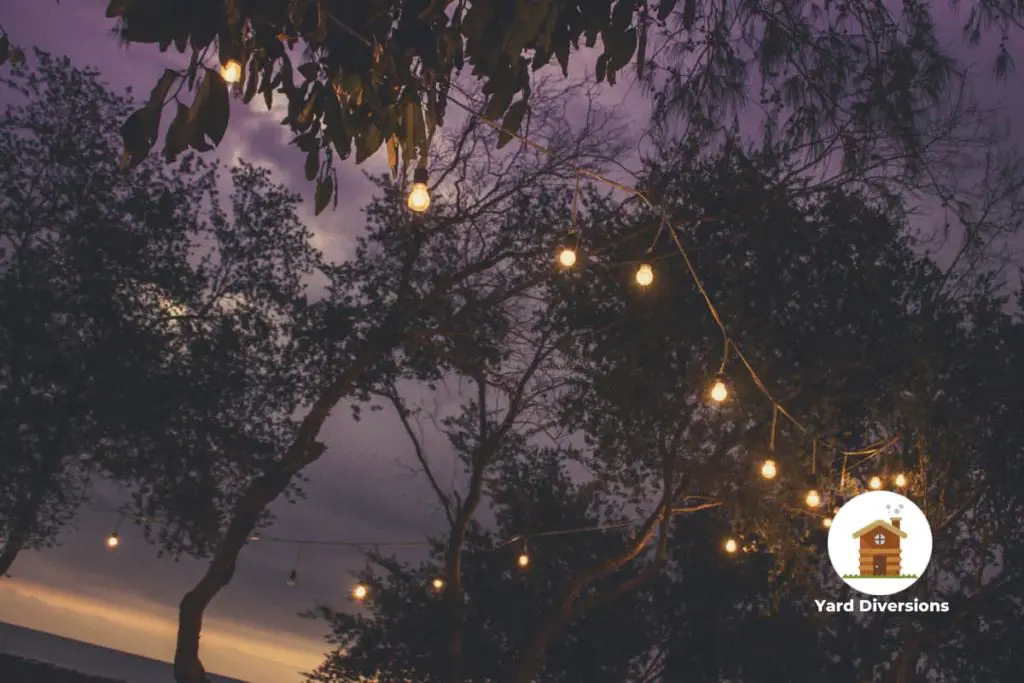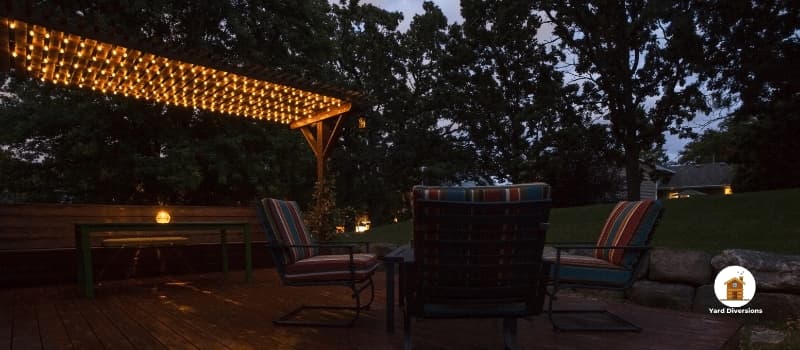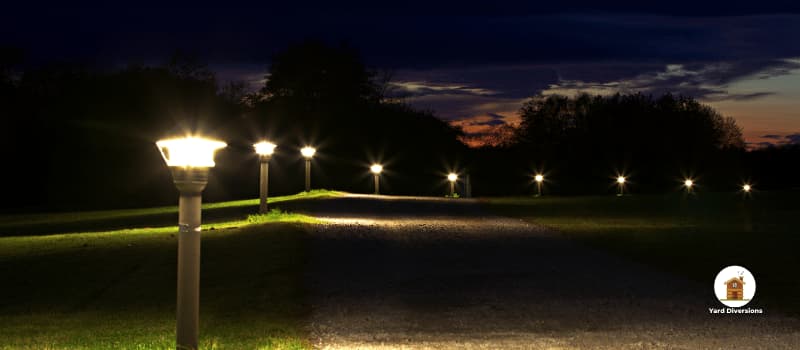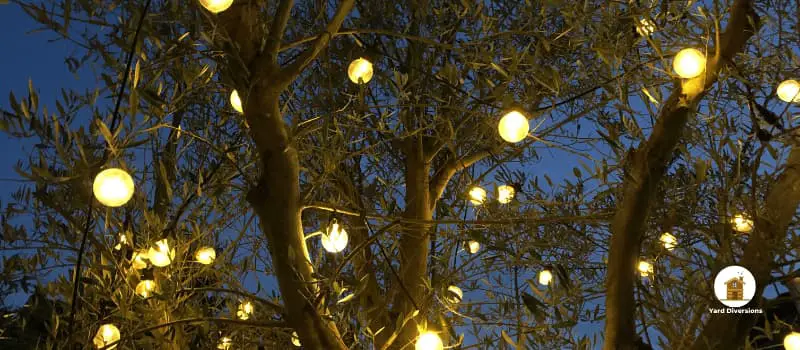The quality and intensity of lighting play an essential role in your outdoor experience. Plus, it also creates the first impression on people’s minds when they pass by or visit your home at night.
But you may wonder, how many lumens do I need for outdoor lighting? You must be asking yourself at this point. Well, let’s find out.
While there isn’t a fixed amount of lumen ideal for outdoor lighting, your necessary lumens depend on many things. Such as how bright you want the lighting or areas of the outdoors you are putting that light in. As a result, the range of lumens you need is reasonably extensive. It can be as little as 12 lumens to as bright as 1300 lumen.
Today we will discuss how many lumens are required for outdoor lighting and do the same amount of lumen work for every part of your outdoors. Find out more below.

The Relation Between Lumen and Watts
How many lumens do I need for outdoor lighting? Before going further, let’s ensure you fully grasp the lumen concept.
So what is a lumen? It is a unit of measurement that states how bright the light from a source will be. Such a source, for instance, a bulb, will have this unit mentioned on its packaging.
However, mentioning lumens on products is a modern practice. Older light bulbs only mentioned Watts.
Which brings forth the next point- what’s the difference between Lumen and Watt? Although the figures might sometimes seem the same, these two are not identical.
While lumen measures light intensity, Watt measures how much electricity the bulb needs to achieve that brightness.
Different light sources might require different wattages to reach the same amount of brightness and intensity. For instance, to get 220+ lumens, an LED light will need 4 watts.
Meanwhile, a Halogen light will require 25 watts to reach that same intensity. The lesser Watt a light source requires to achieve an intended Lumen, the lesser electricity it wastes.
How Many Lumens Do You Need For Outdoor Lighting?
As already mentioned, the range for outdoor lumens is relatively wide. You can use a 12-lumen source to dimly light the outside of your home and create a dreamy, mysterious atmosphere. On the other hand, you can use 1300 lumens to flood the outdoors with intense light and make everything bright as the day.
Between these two points, there are many other possible options for choosing your amount of brightness and intensity.
For example, steps and pathways might require fewer lumens than garden lights. So, your necessary lumens will differ according to purpose.
Lumens According To Different Parts Of the Outdoors
The outdoors is one great combination of different parts. It includes the patio, deck, walkway, garden, and more. And each of these areas has different requirements for lighting.
So, make sure you are not overdoing or undermining any part. The following recommendations might help in that regard.
However, you may want to remember that this is not an absolute or strict set of instructions.
The Patio
The various areas of the outdoors require different lumens because of their purposes. For instance, the patio is a place to host parties. You and your friends, family members, and guests can hang out there and chat.
Therefore, the light there needs to be bright enough for standard illumination. Meanwhile, it needs to blend with the environment and not cause discomfort.
If your patio is small, a total illumination of 600-700 lumens can be perfect. And if you have a more extensive patio, then net illumination needs to be 1200 to 1600 lumens.
Those figures are ideal for standard illumination. But if you want more artsy, shadowy lighting, you might want to tone down the lighting.
So, for the large patios, you might need a total of 300 lumens, and for the smaller patios, 150 lumens will do fine.

Deck
Decks are pretty similar to patios in terms of purpose. However, decks are more open and less private than patios. So, the idea is not to light up the deck too much and rely on the surrounding light.
This will help to maintain the natural flow of the architecture of your outdoors.
However, you also want to ensure that the deck has enough light for the stairs to be visible. Don’t compromise safety for beauty.
Keeping these conditions in mind, 100-200 total lumens work best for small decks. And 300-400 lumens illumination is suitable for the larger deck areas.
Tip: Instead of using one or a few light sources to achieve the lumen, get a lot of small sources and distribute them evenly to reach your target illumination level.
Fencing
Light on your fencing has two significant purposes. First of all, there are security reasons. Any thief or criminal would think multiple times before they climb over a well-lit fence.
Secondly, the illumination from your fencing can contribute to the ambient light and perfectly bind the whole outdoor scene.
So, for your outdoor fence or wall, go for 100 lumens (per two meters). This will significantly light up the place. At the same time, it would not be too harsh on the eyes.
Walking Path
The light from fencing/walls will noticeably illuminate the pathway. But you may need to brighten it a little more for safety, especially if it has any steps.
For each meter of the pathway, you will need 100 lumens of illumination.

Steps and Stairs
If you have steps or stairs as a prominent structure that connects your house to the outdoors, then you need to arrange separate illumination for it.
Here, the main concern is safety. Your steps need to be well-lit to prevent any accident. The secondary concern is looking good. So, you need to adjust accordingly.
A total of 200 lumens for outdoor steps seems like a safe and effective choice. The best way to achieve this is by using multiple small lights for each step. This will help the step lights to blend with the overall scene and create a pleasant rhythmical effect.
If you feel like the step lights are destroying the natural flow of the scene, go for motion sensor lights.
These lights will brighten up when someone approaches the stairs and automatically dim when nobody’s around.
Garden Lights
The garden or lawn is a different landscape. Here, the amount of lumen depends mainly on the extent of the area and how much of it you want to illuminate. For best results, use a moderate lumen total.
So, if your garden is small, 400-600 lumens can work fine. On the other hand, if the garden or lawn area is large, you will need a total of 800-1200 lumens.
Driveway
When you pull your car down the driveway, the headlights cover all the illumination you need. So, you won’t need a lot of lumens for this area. However, you should not leave it dark for security and aesthetic purposes.
Like any other stretched-out area, a driveway also requires lumens according to its length. So, if you have a small driveway, it needs a total of 100-200 lumens.
On the other hand, larger driveways require 400-600 total lumens.

Pool Area
The pool is another area of the outdoors where you have to prioritize safety over looking good.
Generally, your pool can do fine with the light it gets from the surrounding. If it is excessively illuminated, the area will uncomfortably stick out from the rest of the scene.
But it still needs to be illuminated enough if people walk in that area after dark.
So, 100-200 total lumens can serve you perfectly if you have a small pool area. The larger pool area recommends a total lumen of 300-400.
Can Outdoor Lighting Affect the Lawn Aeration Process?
Outdoor lighting can impact yard aerating lawn maintenance. Too much light can alter the natural photosynthesis cycle, affecting the health of the grass. Consider scheduling lawn aeration during the evening or early morning to minimize the disturbance from outdoor lighting.
Final Thoughts on Lumens Needed For Outdoor Lighting
How many lumens do I need for outdoor lighting? Hopefully, you found the answer to the above discussion. Just keep two things in mind. Different areas see different activities, and so the lighting varies accordingly.
Secondly, you should always prioritize safety over beauty when choosing your illumination.

